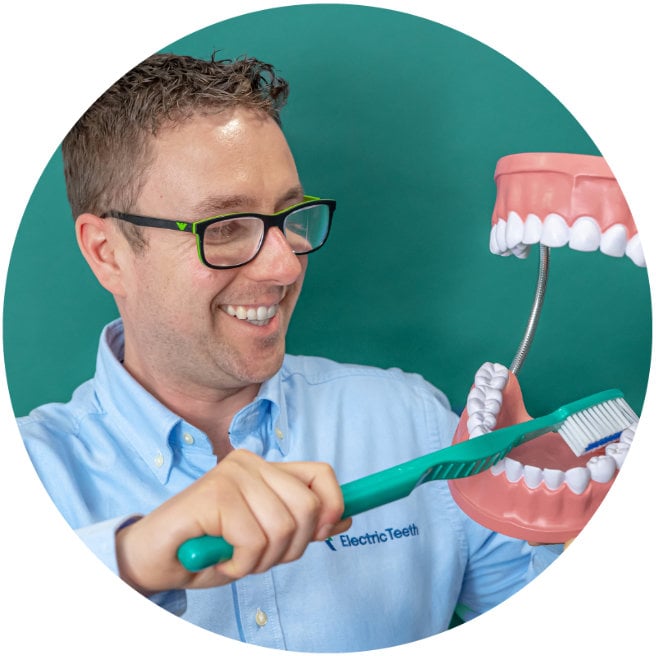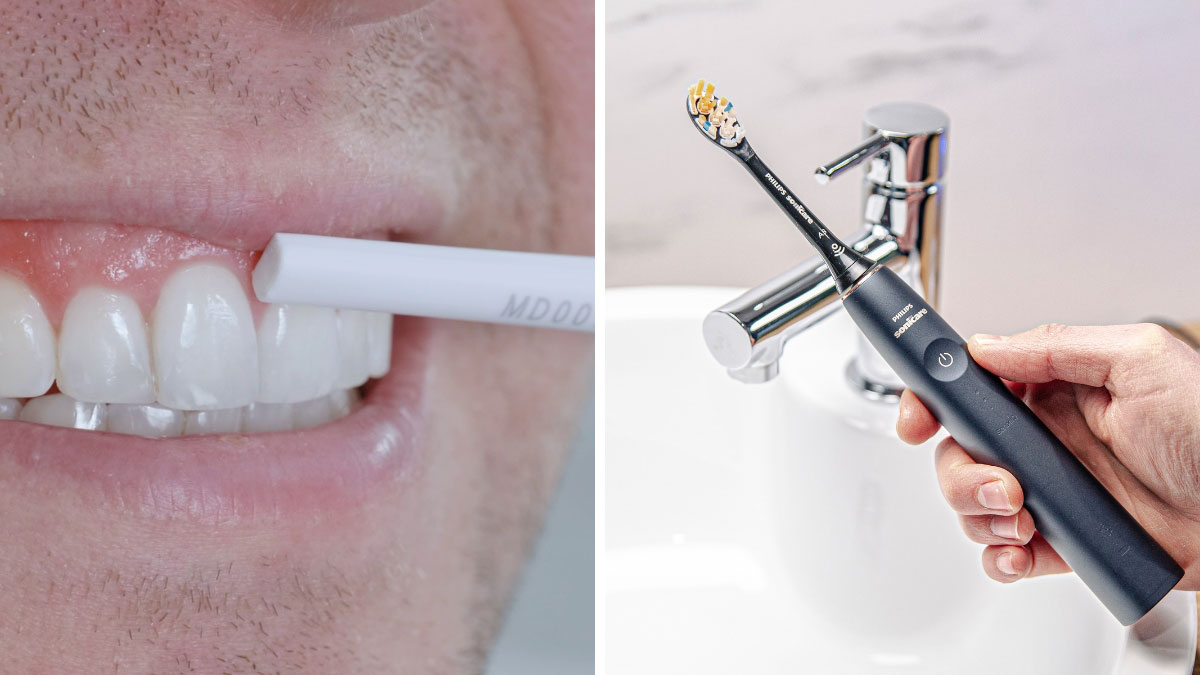
Which one would we choose?
Our choice: Sonic toothbrushes
The vast majority of electric toothbrushes available today are considered 'sonic' electric toothbrushes.
They usually have dentist recommended features, clean the teeth well, are affordable and easy to source.
Sonic brushes were introduced by 'Sonicare', a company now owned by Philips. These have been popularised under the brand 'Philips Sonicare'.
'Ultrasonic' toothbrushes sound similar but are technically different.
Unlike sonic toothbrushes, ultrasonic models don't rely on a physical motion to clean the teeth.
Only a few truly ultrasonic brushes exist, and those that do tend to be very expensive.
There is limited evidence to support the use of ultrasonic toothbrushes instead of sonic toothbrushes.
Our in-house dentist Dr Gemma Wheeler does not recommend using them on a daily basis because they cannot remove all plaque from the teeth.
It's common for the word ultrasonic to be used incorrectly to describe what is actually a sonic toothbrush. We have noticed this in the marketing language of various sonic toothbrushes.
We recommend sonic toothbrushes. Our top choices are listed just below.
If you want a truly ultrasonic brush or want to know how they differ, read on.
Our main electric toothbrush recommendations
|
Our Choice

|
Our Choice

|
Our Choice
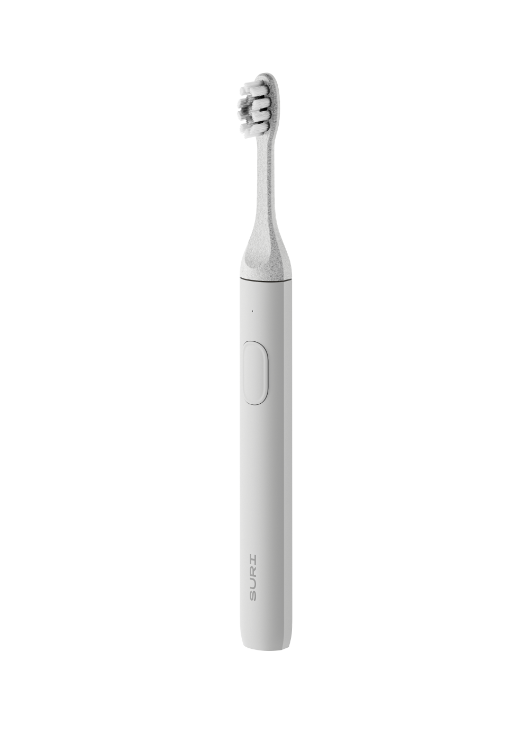
|
|
|---|---|---|---|
| Electric Teeth Rating |
(5)
|
(5)
|
(5)
|
| Achievement | Best overall | Best sonic | Environmental choice |
| Amazon | $99 | $119 | - |
| Shaver Shop | $199.99 | View price | - |
| SURI | - | - | $160 |
What's the difference between a sonic and ultrasonic electric toothbrush?
The fundamental difference between these two types of brushes is that sonic toothbrushes rely on a physical motion to clean the teeth, whereas ultrasonic brushes do not. Ultrasonic toothbrushes clean using hydrodynamic forces. Some use a combination of ultrasonic and sonic technology to remove plaque.
Many of the brushes we review and cover here at Electric Teeth are sonic, such as those from Oral-B and Philips.
However, Ultrasonic is another type of brush you could consider.
These are rarer to come across, but they are still available on eBay.
In this article, we'll be taking a look at the key differences between the two types of brush. We've included an infographic further down showing the two side by side.
If you are looking for an overview of the current range, you may like to see our best electric toothbrush post.
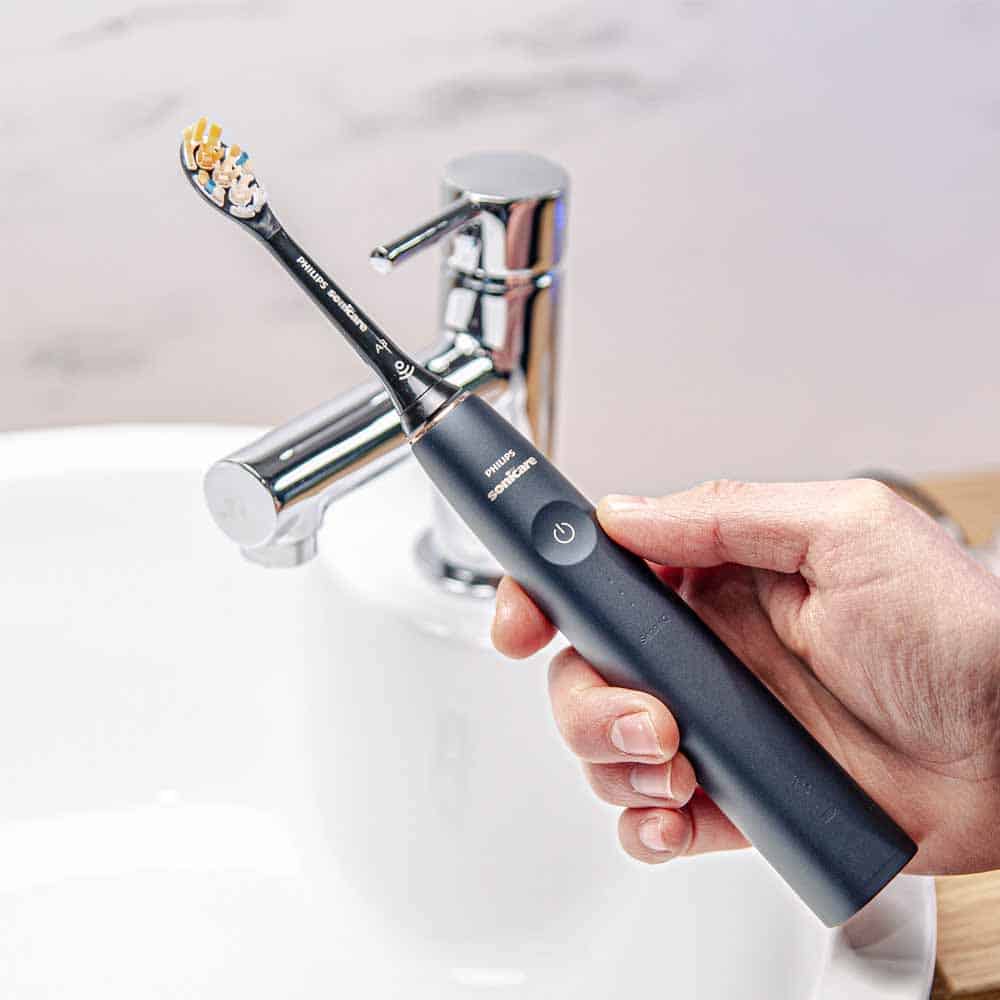
Sonic electric toothbrushes
To be classified as a sonic toothbrush, the motion or vibration from the brush has to be quick enough to produce a ‘humming’ sound that is within the audible range of the human ear (20 Hz to 20,000 Hz).
Sonic brushes typically offer 12,000-24,000 oscillations or 24,000-48,000 movements per minute.
Sonic brushes rely on a sweeping motion alone to clean the teeth, the movement that they provide is often high in amplitude which means they offer larger sweeping brush stroke motions.
It is the bristles on the brush head that move at this speed to essentially brush away food particles and bacteria that sit on the teeth and gum line.
As it does this, the sonic motor inside the brushes creates a sound that is audible to the human ear.
Examples of a sonic brush include Philips Sonicare, Colgate, Ordo, Spotlight Oral Care, Fairywill, SURI, Curaprox, Oclean and many more. We look at these brushes in detail in our electric toothbrush reviews.
The vibrations the bristles make do cause disruption of plaque beyond the tips of the bristles without the bristles actually touching that area.
It is thought that very high frequencies cause liquids to move and create “hydrodynamic forces” which damage the plaque layer in hard to reach areas (1).
The following diagram from the National Library of Medicine provides a visual representation of this:
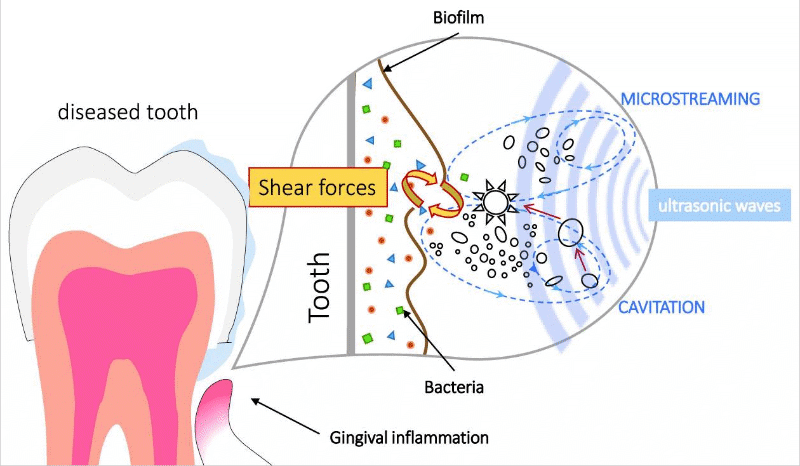
This secondary effect is actually the ultrasonic effect. This happens in many sonic toothbrushes and is beneficial to your oral health.
Sonic toothbrushes (with ultrasonic effects) should not be confused with ultrasonic toothbrushes. They are different.
Ultrasonic toothbrushes use only the very high frequencies, which you cannot hear. Ultrasonic toothbrushes clean using only hydrodynamic forces, and do not have a mechanical cleaning effect.
That said, often unintentionally, the word ultrasonic is used to describe products which use sonic frequencies too. Rarely are brushes truly ultrasonic. Be wary if a toothbrush is labelled as such.
As we shall explain, ultrasonic brushes operate at a much higher frequency and use ultrasound rather than the motion of the brush head to remove debris and bacteria. They can be silent too.
Ultrasonic electric toothbrushes
Ultrasonic toothbrushes, unlike sonic ones, do not rely on a physical motion to clean the teeth.
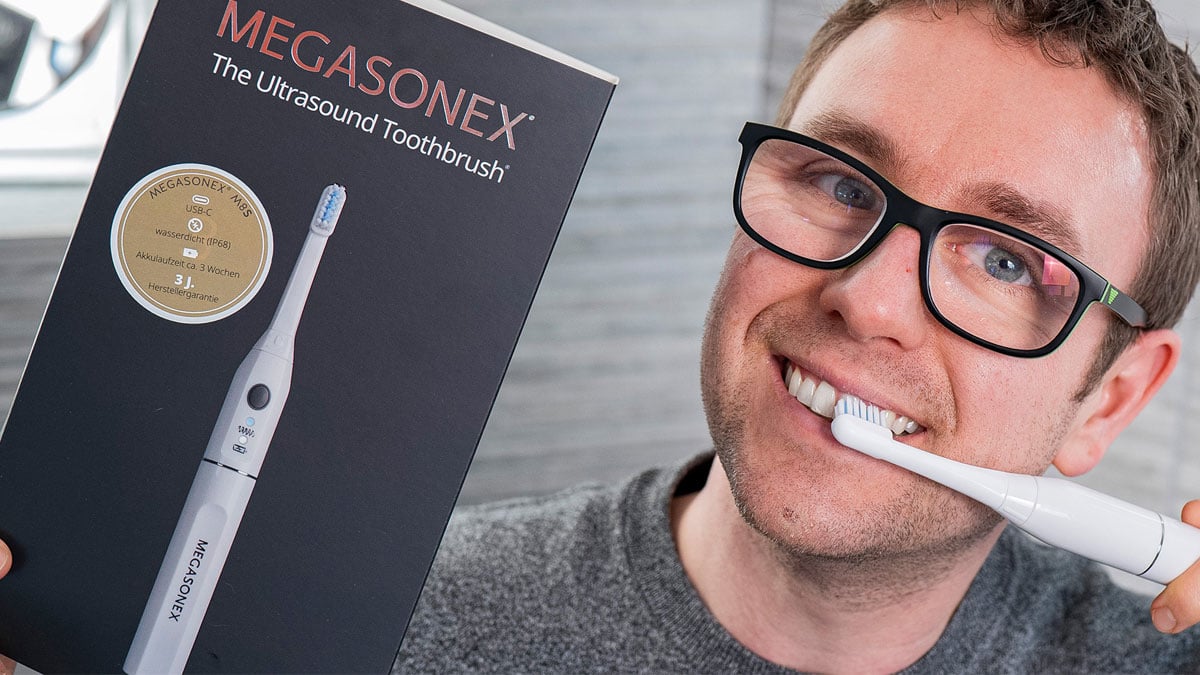
An ultrasonic toothbrush is one that uses a very high frequency of vibration referred to as ultrasound to remove plaque and bacteria from the teeth.
To be classified as such, the brush has to emit a wave of at least 20,000Hz or 2,400,000 movements per minute, considerably more than the very popular sonic technology.
This frequency is too high to be heard by the human ear. It is ultrasonic.
Within the USA, the Food and Drug Association (FDA) actually specify a minimum of 1.6MHz or 192,000,000 movements per minute.
These high frequency waves are also low in amplitude. They can damage the bonds between bacteria, without a bristle physically touching the area.
The overall effect is that the bacterial chains found in the mouth that make up plaque are broken up by the vibrations and can work as far as 5mm below the gumline.
Essentially speaking the brush can clean the teeth simply by resting the brush on it.
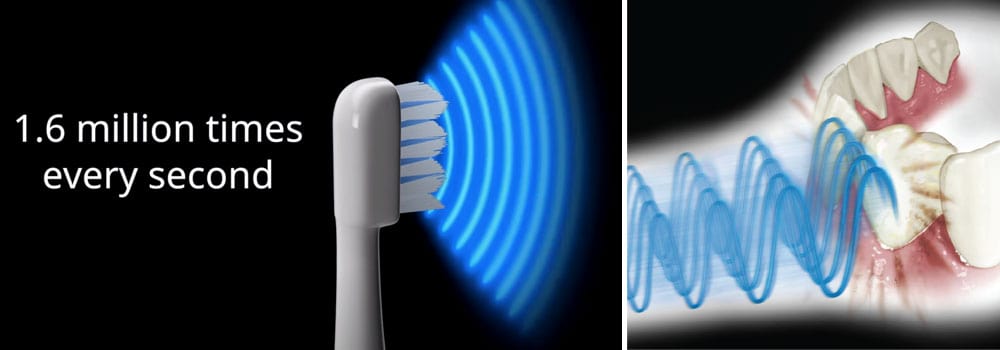
Based on how they operate and their classification, these ultrasonic brushes may also be referred to as ultrasound toothbrushes.
An ultrasonic brush compared to the more commonly seen and used sonic brushes does not need a physical motion to clean the teeth surfaces and gumline. It is also silent in operation, you won't be able to hear it.
Many ultrasonic brushes also provide additional sonic vibration (ranging from 9,000 to 40,000 movements per minute). This provides additional physical or mechanical cleaning via a sweeping motion of the bristles, this removes food particles and bacterial chain remnants.
As weird as it sounds, the addition of the sonic vibration (which can be heard) helps overcome the strange sensation of not having to brush the teeth in the way you have to with a sonic toothbrush.
An example of an ultrasonic brush is the M8S produced by Megasonex, which we have reviewed.
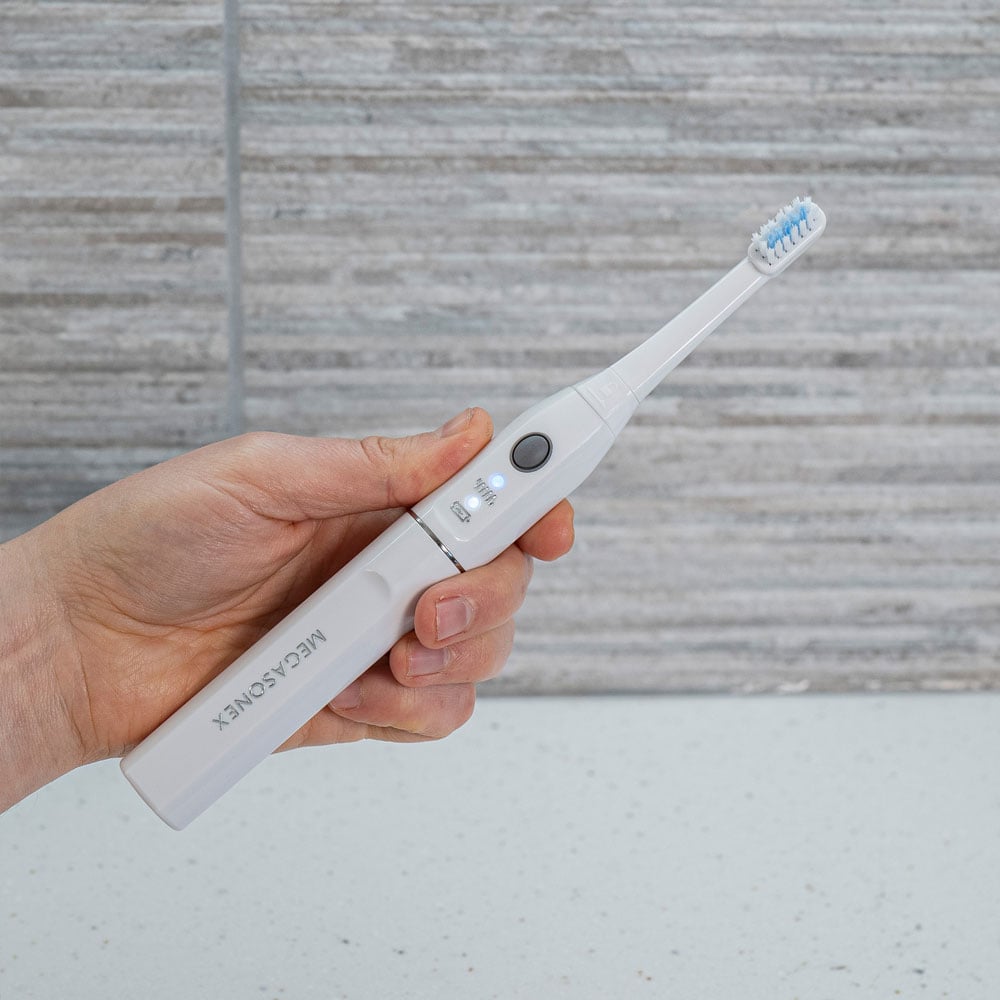
This video from YouTube gives a good explanation of what an ultrasonic toothbrush is and how it works:
Sonic vs oscillating-rotating
Sonic toothbrushes are very popular, but so are oscillating-rotating brushes.
Oscillating-rotating brushes function differently to sonic brushes.
The bristles move in a back and forth circular motion compared to the straighter back and forth sweeping motion of sonic brushes.
Whilst the 2 approaches are different, oscillating-rotating brushes do fall into the 'sonic' category. This is because the movement produces vibrations in the audible range.
It is Philips Sonicare that has made sonic toothbrushes popular and Oral-B who popularised oscillating-rotating brushes.
There is much debate as to which is better. Clinical reviews that assess all the studies have concluded that Oral-B’s cleaning action does remove more plaque. However, whether this has any real life obvious benefit is not actually known. More research is required.
The reality is that the cleaning results from either are comparable. Both approaches are backed by many dental professionals around the world. Both types of brush are more effective than manual toothbrushes when it comes to removing plaque and reducing levels of gum disease.
Our Sonicare vs Oral-B article discusses the differences between the cleaning actions and the supporting evidence in more detail.
Despite sonic brushes being very popular, it is an oscillating-rotating brush from Oral-B that is our top choice for an electric toothbrush as it delivers great cleaning results and features at a very competitive price.
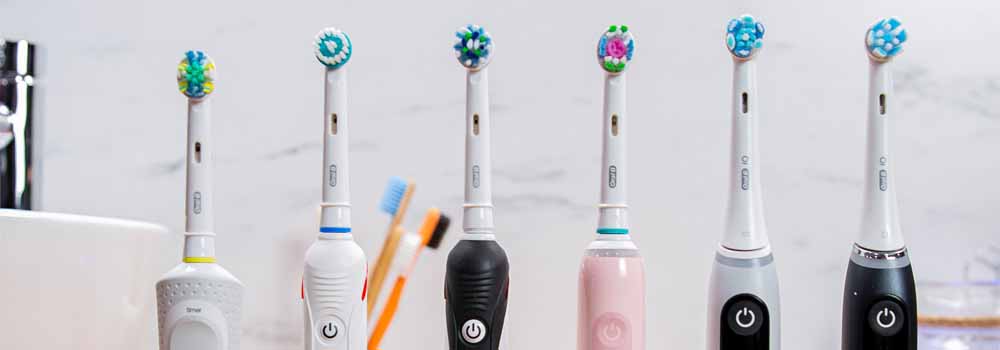
Other technology - DentalRF, Ionic power & more
The electric toothbrush and choosing one is more complicated than it really needs to be.
Many companies will cite special technology and features that make their brushes better.
There are other brushes that use additional technology. Examples of those technologies are:
- DentalRF
- Iconic power
Whilst there may well be scientific merit to each of these, as it stands none have yet proven themselves worthwhile alternatives to the conventional sonic toothbrush.
In fact, many of these products still offer a sonic cleaning action, but the technology gives an additional dimension, and improvement to the cleaning results.
These technologies are different to the ultrasonic technology which is the main focus of this article.
It is worth being aware of these though because it is very easy to get confused and misunderstand what exactly is on offer, with so many competing brands and products.
Who makes the best ultrasonic toothbrush?
Whilst ultrasonic toothbrushes have been shown on a limited scale to be effective (1 & 2) the reality is that few such toothbrushes are available to buy.
The market is dominated by sonic toothbrushes, notably those from the largest household brands.
Most ultrasonic toothbrushes still have an element of sonic cleaning. Likewise many toothbrushes marketed as sonic technology will have a small ultrasonic effect too.
There are several toothbrushes that suggest they are ultrasonic, using such words in the product title and description, but in fact, they are just standard sonic toothbrushes, operating at up to 48,000 movements per minute rather than using ultrasound to achieve the cleaning.
It is my understanding that at the time of writing, the brands who do make toothbrushes closest to being truly ultrasonic are Megasonex, Smilex and Emmi-Dent. These rely mostly or entirely on ultrasonic frequencies (with minimal sonic frequencies) so you'll be best off choosing between these if ultrasonic is what you want.
We have been hands-on with the Megasonex M8S and plan to test more in the near future.
At the time of writing, I couldn't find any of these brushes available with retailers.
Don't expect to find these in your local pharmacy, dentist's office or supermarket.
Most manufacturers ship to Australia, or you can find them on eBay.
So at this moment in time it looks like this is your best bet if you want an ultrasonic toothbrush.
If you’re not specifically looking for ultrasonic, but rather a ‘standard’ electric toothbrush, check out our post that looks at the best sonic toothbrushes.
Comparison table
To help summarise the key differences between sonic and ultrasonic toothbrushes, we've put together the following table.
| Sonic | Ultrasonic/Ultrasound | |
|---|---|---|
| Cleaning action | A physical sweeping motion is used to clean the teeth. Typically 12,000-24,000 oscillations or 24,000-48,000 movements per minute. Use high frequency waves. | No physical motion is required to clean the teeth. (Some do come with bristles for added cleaning effectiveness) 20,000Hz or 2,400,000 movements per minute. Use high frequency waves with low amplitude. |
| Noise/sound | Moderate humming sound. | Silent (ultrasound only mode). |
| Price (approx) | $30-$400+ | $200+ |
| Supporting clinical evidence | A large amount. | A limited amount. |
| Popularity & availability | High | Low |
| Common brands | Philips Sonicare Colgate Ordo SURI Oclean Oral-B | Emmi-Dent Megasonex Smilex |




